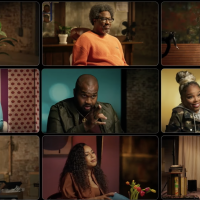When someone in the U.S. is killed by a police officer, there’s no guarantee that their death will be recorded as such.
This reality is no surprise to the activists, many of them Black, Latino, and Indigenous, who’ve said for years that their loved ones, friends, and neighbors are killed by police officers yet officials don’t accurately report their cause of death. Instead, the fatality might be attributed to causes like heart disease or sickle cell trait. Sometimes coroners or medical examiners are embedded in police departments and may be under pressure to list a cause other than police violence. In other cases, they fail to properly cite the cause of death because of poor standards or training.
A new study published in the Lancet illustrates the vast disparity between the federal government tally of police killings and what people see happening in their own communities. The researchers estimate that between 1980 and 2018, more than 55 percent of these incidents, or 17,100 deaths, were misclassified or unreported in official statistics. They also found that Black Americans disproportionately experienced fatal police violence. They were 3.5 times more likely to be killed by a police officer than white Americans.
The study was led by researchers at the University of Washington School of Medicine’s Institute for Health Metrics and Evaluation (IHME). The research team took figures from the National Vital Statistics System, which tracks every death certificate in the U.S., and compared them to estimates of police violence generated by the non-governmental open-source databases Fatal Encounters, Mapping Police Violence, and The Counted. Those projects have endeavored to track police killings in all 50 states through public records requests and media reports, and past research has demonstrated that such open-source databases can be highly accurate.
The study’s authors concluded that the U.S. must replace “militarised policing with evidenced-based support for communities,” prioritize the public’s safety, and “value Black lives.”
“We think the U.S. should really be investing in solutions to police violence that are led by Black, Hispanic, and Indigenous communities.”
“We think the U.S. should really be investing in solutions to police violence that are led by Black, Hispanic, and Indigenous communities,” Eve Wool, a co-lead author of the study and a research manager at IHME, said in an interview.
The study is one of a few recent efforts to quantify the undercounting of police killings. In 2017, Harvard researchers compared data from Fatal Encounters to National Vital Statistics System figures and similarly found that the government failed to record more than half of police killings in 2015. Misclassification rates were particularly high for Black people, those living in poor counties, victims killed by means other than a firearm, and youth ages 18 and younger.
Social epidemiologist Justin M. Feldman, lead author of the 2017 study and a Health and Human Rights Fellow at the Harvard FXB Center for Health & Human Rights, peer reviewed the Lancet study prior to its publication and told Mashable that it provides a persuasive estimate of undercounted deaths.
The research adds to his findings by projecting the disparity over the course of decades, as opposed to a single year, and by estimating deaths by race and ethnicity at the state level. During the time period studied, the five states with the highest underreporting rates were Oklahoma, Wyoming, Alabama, Louisiana, and Nebraska. States with the lowest rates were Maryland, Utah, New Mexico, Massachusetts, and Oregon.
Feldman described the decades-long estimate of uncounted deaths as a “best guess.” Since the open-source databases collectively reflect deaths that happened between 2000 and 2019, the researchers produced a historical estimate for fatalities going back as far as 1980 by using a statistical regression to compare those figures with government data.
Their finding — that 17,100 out of 30,800 deaths were unreported or misclassified — rests on the assumption that the rate of underreporting remained stable over time.
Feldman noted that it’s likely the study understated the extent of the problem given that coroners and medical examiners may have omitted or misclassified far more deaths decades ago compared to recent years, when there’s been increasingly more pressure from the public as well as health departments to accurately account for deaths caused by police violence.
Police killings are a mental health crisis for Black people. They deserve real solutions.
The findings point to the need for policy solutions that improve accurate reporting of police killings and prevent those deaths in the first place, Feldman said.
“We still, in 2021, don’t have good government-run systems tracking police killings,” he said.
Feldman suggested that death certificates in the U.S. could include a checkbox where a coroner or medical examiner would indicate whether the person died during an encounter with the police or while in their custody. Checking the box wouldn’t mean police caused the death, but could trigger further review by government officials.
Feldman said that during the Obama administration, a Justice Department initiative used artificial intelligence to trawl the web for media reports related to deaths that happened in police custody and then surveyed local officials to learn more about what happened. The program appears to have languished during the Trump administration, but Feldman said it should be revived. He also noted that the federal agency can withhold a portion of government grants from police departments if they don’t report deaths in custody.
“We still, in 2021, don’t have good government-run systems tracking police killings.”
Karin D. Martin, an assistant professor at University of Washington’s Daniel J. Evans School of Public Policy & Governance who has studied policy solutions for police violence, said the latest research confirms what’s generally known about undercounted deaths and how Black Americans are disproportionately killed by officers. (Martin wasn’t involved in the research and has no affiliation with the IHME.)
Martin says that preventing police killings requires a deep understanding of how widespread firearm availability and possession in the U.S. creates a culture in which law enforcement may perceive any interaction with the public as potentially life-threatening, and may react violently as a result. It also means looking at issues like why communities are over- or under-policed, why the baseline suspicion of people in some communities is so high, and how rules set by police departments, like whether officers can shoot a suspect fleeing a non-violent crime or whether they can engage in high-speed chases, can contribute to police killings.
“I think it’s a very complex problem, and that it needs to account for both the environment that law enforcement officers are encountering, and for the history of policing in this country, and the racial issues that have plagued this country forever,” said Martin.
Source : New study of police killings confirms what activists have said for years













